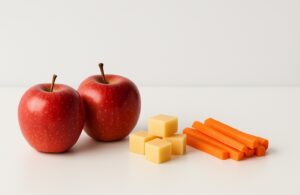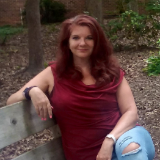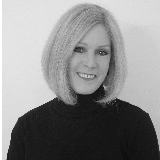Introduction
Acute sinusitis is defined as inflammation of the lining of the sinuses. Sinuses are hollow cavities inside your skull with the largest ones found under your cheekbones and are termed maxillary sinuses. The sinuses make mucus that clean out the bacteria and other particles from the air that you breathe through your nose. When, for various reasons, the sinuses become blocked, they become filled with fluid. This blockage allows foreign microbes to grow inside the sinuses and the tissues lining your sinuses become infected or inflamed.
Dr. Ralph Metson from Massachusetts Eye and Ear Infirmary in Boston conducted a study on the effect of sinusitis on daily functioning. He compared sinusitis with other chronic illnesses such as chronic obstructive pulmonary disease, heart failure, and back pain. The research found that sinusitis sufferers reported higher levels of pain and lower levels of social functioning, as well as problems with work, energy, and mental health.
It is estimated that approximately 12% of the United States population is affected by acute and chronic rhinosinusitis. Women appear to be more affected than men and the age group is predominantly from the 40-60s age range. The cost to manage acute and chronic rhinosinusitis is estimated to be 11 billion dollars in the United States, and this does not include the loss due to decreased job productivity. Rhinosinusitis is also the fifth most common diagnosis for which antibiotics are prescribed. Hence, appropriate diagnosis and management is necessary in the age of growing antibiotic resistance.
Anatomy of the paranasal sinuses
The face has four pairs of sinuses, all together known as paranasal sinuses. The frontal (forehead) and maxillary (cheek) sinuses drain into the ethmoid sinus (found behind the bridge of the nose). The ethmoid sinuses drain into the nose via narrow channels called the ostia. When the ethmoid sinuses get clogged or backed up, the frontal and maxillary sinuses get backed up as a result. This is the reason that patients with sinusitis tend to experience headaches and pressure in the cheek region. The last pair of sinuses, the sphenoid sinuses, are located deep in the skull, behind the eyes and also drain into the nose.
Causes of Sinusitis
The main cause of sinusitis is swelling in the nose due to a number of different reasons. The swelling in the nose may be due to environmental, anatomical, or genetic causes. The most common causes are the common cold or allergies. More serious sinusitis can result from structural problems, such as a deviated septum (a crook in the partition that separates the right from left nasal cavities) or nasal polyps (small, grape like growths in the lining of the sinus cavity).
When the nasal passageways swell, it results in a blockage, and the bacteria that are normally present in the nose and creeping into the sinuses are unable to drain. The glands in the sinuses continue to produce mucus in an attempt to clean out the sinuses. However, due to the blockage, the microbes do not drain. This is a perfect nidus for an infection. The immune system’s response to this infection is swelling. This is what causes headache and facial pain; mucus buildup, which produces congestion; and an influx of white blood cells to fight the bacteria, which thickens the mucus and may tint it yellow or green. Other symptoms include loss of smell or taste, cough, bad breath, fever, toothache, and fullness in the ears.
The most common causes of sinusitis in adults are:
• Swelling inside the nose like from a common cold
• Blocked drainage ducts
• Structural differences that narrow those ducts
• Nasal polyps
• Immune system deficiencies or medications that suppress the immune system
For children, things that can cause sinusitis include:
• Allergies
• Illnesses from other kids at daycare or school
• Pacifiers
• Bottle drinking while lying on the back
• Smoke in the environment
The main things that make sinusitis more likely for adults are infections and smoking. There are several types of sinusitis, including:
• Acute, which lasts up to 4 weeks
• Subacute, which lasts 4 to 12 weeks
• Chronic, which lasts more than 12 weeks and can continue for months or even years
• Recurrent, with several attacks within a year
Signs and Symptoms
Patients who have sinusitis will present with nasal congestion and obstruction, purulent nasal discharge, drainage in the throat (or postnasal drip) and facial pain or pressure in the nose, cheeks, or forehead region that is worse when bending forward. Other less specific symptoms can include fever, fatigue, cough, hyposmia, ear pressure, headache, and halitosis. On physical examination, findings may include purulent drainage in the nose or posterior pharynx and nasal speech.
Treatment
Below are some home remedies to treat sinusitis.
Saline Nasal Spray
Inhaling saline solution can help to clear a blocked nose. A saline solution can easily be made at home using sterile water, salt, and baking soda. Combine the following ingredients:
• 1/4 pint of clean water
• 1/4 teaspoon (tsp) of salt
• 1/4 tsp of baking soda
Use a clean, dry spray bottle. Gently insert the nozzle into a nostril and spray in the solution. Repeat two to three times per day.
Neti Pot
Some people use neti pots to rinse out the nose, which helps to keep the mucous membranes moist and relieve pressure in the sinuses. The device looks like a small pot with a long spout. They can be purchased online.
Here is how to use a neti pot:
- Wash the hands
- Fill the pot with sterile water
- Lean directly over a sink
- Tilt the head sideways
- Gently insert the spout into the highest nostril
- Breathe through the mouth
- Pour water into the nostril
Water will run from one nostril to the other, which should flush out pollen, bacteria, and other debris. A person should repeat this process on both nostrils. It is essential to use sterile or distilled water, which can be bought at a drugstore, not tap water. Alternately, boil water and allow it to cool.
Steam Inhalation
Using steam to open the passages in the nose can help to relieve sinus pressure. Steam inhalation is easy to do at home. Boil water, pour it into a large bowl and lean over, so the face is directly above the water. Cover the head with a towel, and breathe through the nose.
Hydration
Any time a person is unwell, it is essential to keep the body hydrated. Keep the mucous membranes in the sinuses moist by drinking plenty of fluids. This helps them to work properly. Water, fruit juices, and herbal teas are good alternatives to coffee.
Preventing sinusitis
There are many things you can do to reduce your chance of developing sinusitis or to relieve early sinusitis symptoms. One of the most important is to promote drainage and keep nasal passages clear. Here are some suggestions:
- Steam Inhalation: You can inhale steam in the shower to keep your nasal passages clear. You can also boil water, place a head over your towel, and carefully bend over the pot to inhale the steam. The steam can get very hot so be careful.
- Sleep with your head elevated: Mucus pools in your sinuses at night when your head is down, so have your head propped up with pillows or a wedge during sleep.
- Avoid dry environments. A humidifier in your home (in particular, by your bed) and where you work can help prevent nasal passages from drying out. Keep humidifiers clean and free of bacteria and mold.
- Drink lots of water. Good hydration helps keep the mucus thin and loose. Have a bottle of water at your desk at work, or put a glass near the kitchen sink to remind you to drink water throughout the day.








